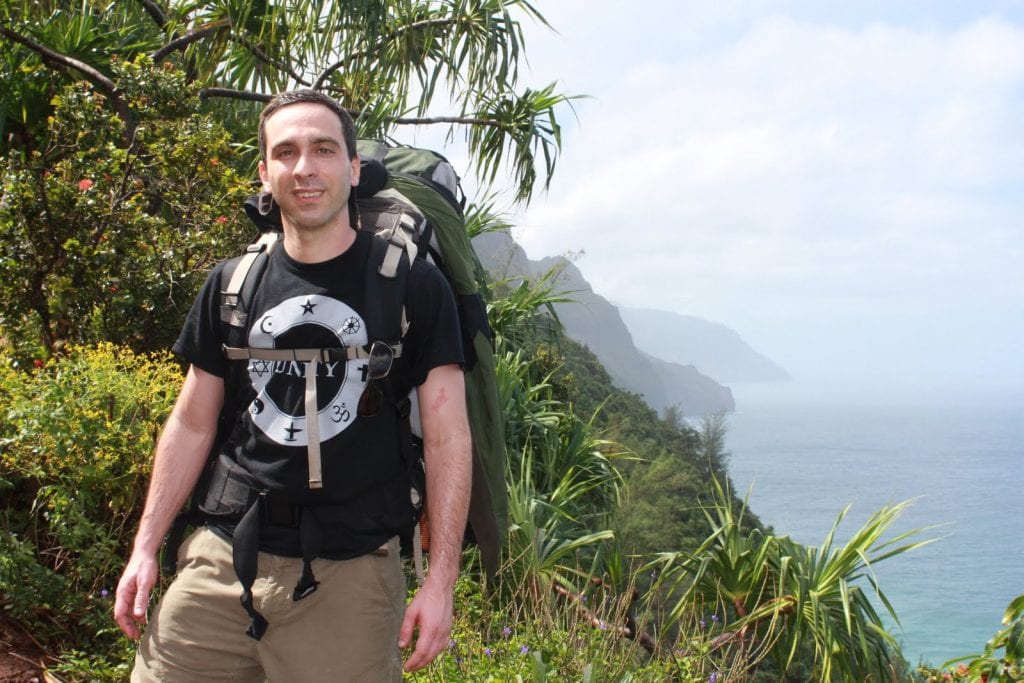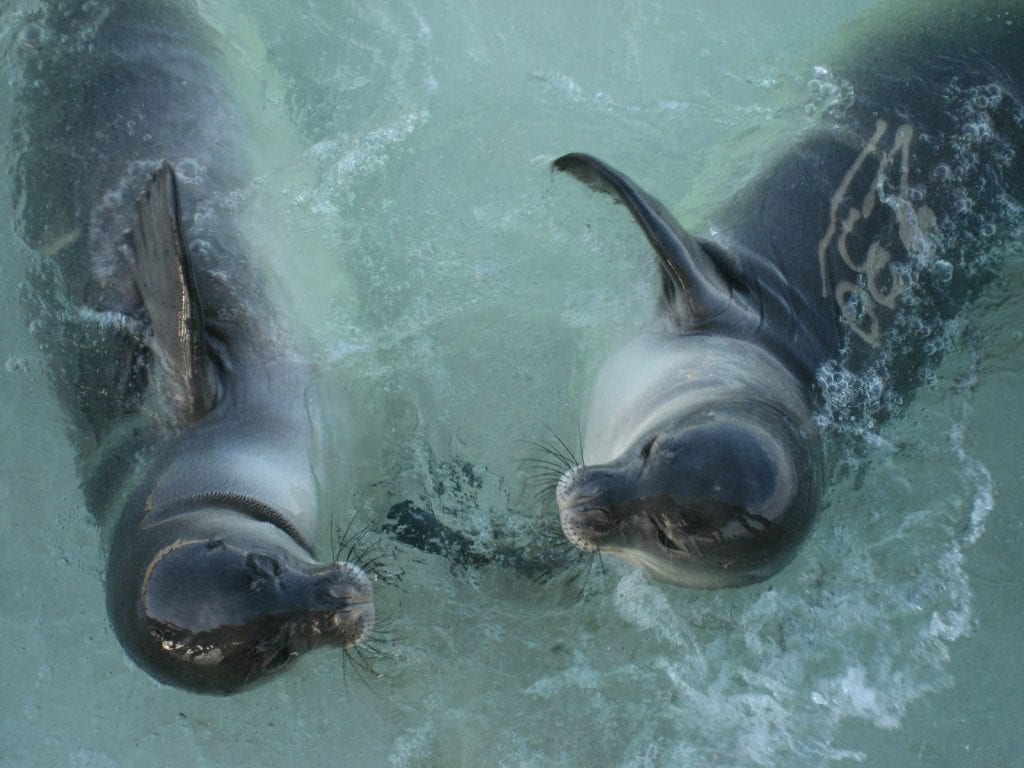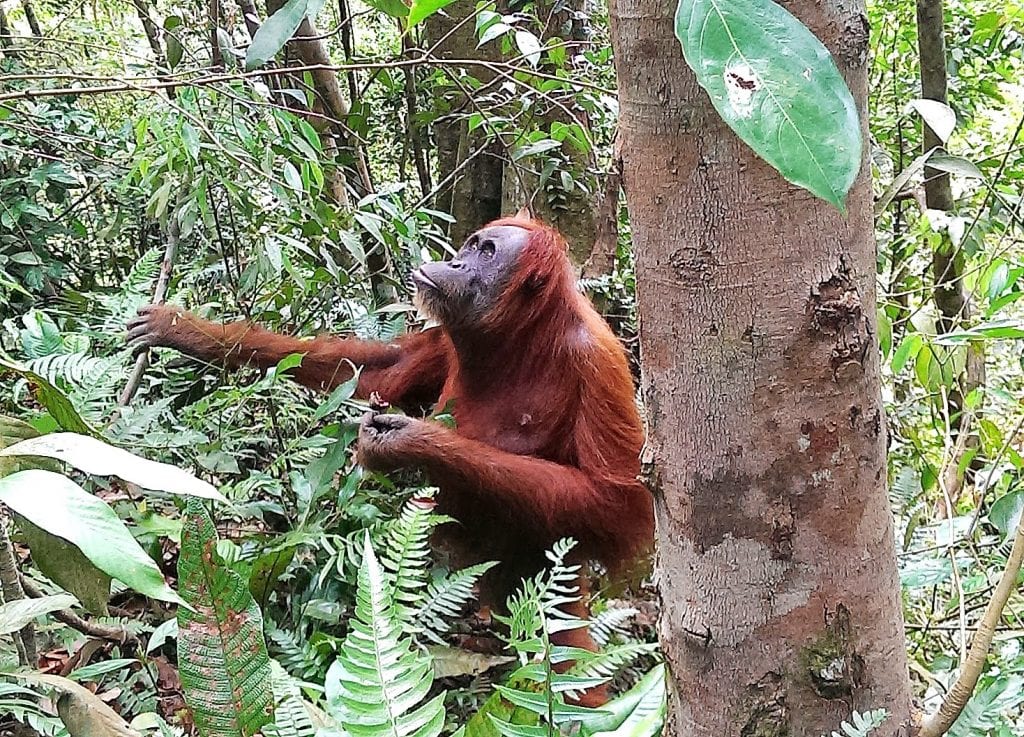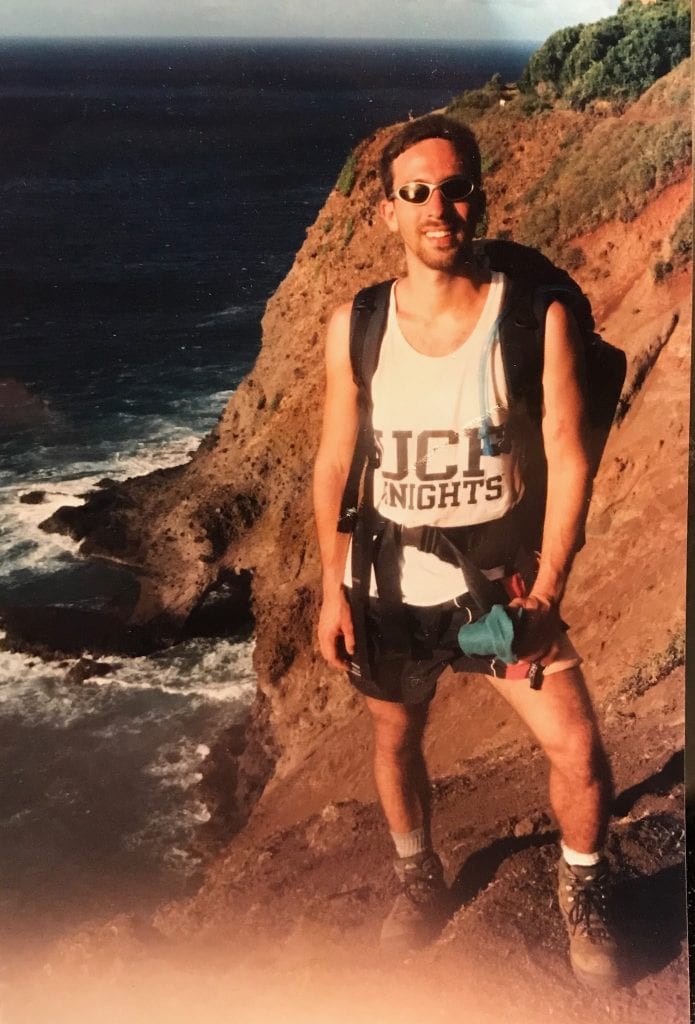Never Hug an Orangutan

UCF alumnus Paulo Maurin, Ph.D., shares tales of adventure in his newly-published book “The Hugging Orangutan Chase: Narrative of encounters with animals and people across the Hawaiian and Indonesian Archipelagos.”
Maurin currently works for the National Oceanic and Atmospheric Administration (NOAA) Coral Reef Conservation program in Hawaii. During his first seven years, Maurin participated in joint international work between the United States Agency for International Development and NOAA. This work frequently took him to the Coral Triangle region–an area which includes the tropical marine waters around the countries of Indonesia, Malaysia, Papua New Guinea, Philippines, Solomon Islands and Timor-Leste. This epicenter of coral biodiversity houses more than 500 different species of reef-building corals.

It was his travels to Indonesia in particular that brought about many of the adventures he writes about in his book. During a side trip to Sumatra, Maurin joined a local tour group and ventured into the forests to seek orangutans in their natural environment, without the touristy operations of rehab centers. This trek ultimately inspired the creation of his book, and was the source of the title.
“I was hiking first, along with a local guide, with the rest of our small tour group behind,” Maurin said. “Suddenly, the branches are breaking angrily in front of me, and the guide shouts to run back. He tells us that this particular orangutan will try to catch and hug us to demand food. For a moment, I thought that was a beautiful thing, but he said it was dangerous. I started to run, and thought that it would make a good story someday.”

After being chased by the hugging orangutan, Maurin’s tour group came upon a mother and a baby orangutan feeding in the trees above. The group quietly sat down on the ground to observe. Maurin started mimicking the apes by grabbing nearby leaves, and then the roles switched – the young orangutan started observing this strange human.
“I then ran out of leaves to pretend to eat, so I stopped,” he said. “The baby orangutan that was feeding right above me looked at me, broke off a thin branch full of green leaves and dropped it in front of me. He didn’t want me to go hungry. I was so inspired by the juxtaposition in behaviors – aggressive and caring – that I thought I should really write these stories down somewhere.”
This orangutan encounter was not the first time Maurin had a personal encounter with an animal. While pursuing a graduate degree in organizational communications at UCF, a baby manatee approached Maurin while he swam in a spring.
“For ten minutes, this very playful young manatee would mimic my movements and ask for a belly rub,” he said. “These sort of close encounters, where one gets to experience the individuality of an animal, have a powerful effect.”
This encounter inspired Maurin to study manatee causalities during his time at UCF. His research found a correlation between newspaper stories featuring manatee deaths and subsequent purchases of “Save the Manatee” license plate tags as a donation to manatee conservation groups. This enabled Maurin to understand the threats society faces and how conservation steps are taken after these threats receive media coverage.

He took this research further as he pursued his doctorate degree in information sciences at the University of Hawaii, Mānoa. Converging his academic interests and conservation efforts, he focused his studies on near-shore marine resources and management after seeing how local citizens united to protect a sunken volcanic crater in their area. Near the end of his degree, Maurin obtained the fellowship with NOAA in Washington, D.C. that ultimately led to his travels and future job as the coordinator of Education and Fellowship programs for NOAA, working to assist conservation and manage marine resources.
His work involves a lot of technical writing, so the feat of writing a book allowed Maurin a creative outlet to express himself. With encouragement from his wife, children and a trip to Iceland, Maurin began to document his stories of adventure. His book came together after a year and a half. Maurin wrote the book, designed the layout, created the cover and self-published via Amazon’s Kindle Direct Publishing.
“With self-publishing, there is no need to worry about being at the mercy of a publisher,” he said. “’The first audience should be the writer. The writing process should be fun, otherwise it might never get done.”
“The Hugging Orangutan Chase: Narrative of encounters with animals and people across the Hawaiian and Indonesian Archipelagos” can be purchased on Amazon.
